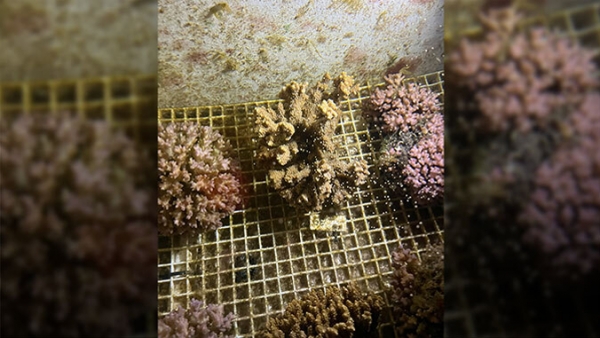Student scientists successfully collected coral egg and sperm bundles to test on a redesigned cryo freezing device at the University of Hawaiʻi at Mānoa’s Hawaiʻi Institute of Marine Biology (HIMB) on Moku o Loʻe (Coconut Island) in the evening of June 19, marking a crucial step in saving the species threatened by climate change and pollution.
Montipora capitata, a type of coral commonly found in Hawaiʻi, is known to reproduce on nights surrounding the new moon in late May to July. During these rare spawning events, colonies release thousands of egg-sperm bundles.
At 8:45 p.m. on June 19, under the glow of red light headlamps that are less invasive to the coral, scientists and students at UH Mānoa and the University of Minnesota waited patiently for egg-sperm bundles that resemble tiny styrofoam beads to rise to the surface of the water. Once at the surface, the bundles were carefully extracted and placed into vials. The work during the evening produced thousands of bundles for collection and testing.
Coral sperm will be stored using cryopreservation, which is a process that freezes to preserve them. By freezing coral sperm, scientists are able to bank samples until they can be transported around the world and transferred to coral eggs of varying species of coral. Having diverse coral reefs provides a more flourishing ecosystem that supports more plants and wildlife.
Read more at University of Hawaii at Manoa
Image: Coral spawning (Photo credit: Jia Cashon via University of Hawaii at Manoa)


